“Surprise!” hollered Rathy and Kagna at the balcony. They have been there for a good five minutes while I get Azalia to get off her bum and follow me outside. Little that she knew, I had assembled the biggest party in town. (Well it was 8am on a weekday.) The sun was shining through the temples over the horizon with the morning breeze still in the air. And on the veranda of Bloom Garden, our abode for the short stay, were the four of us celebrating my wife’s 27th birthday. The cake was meticulously written in Khmer and read “Azalia’s Cambodian Birthday”. Had it not been for my new friends though, it would’ve probably had my own translation instead -- which apparently meant “silly putty”. No thanks to Google. It was barely an hour since we set foot on Siem Reap and we were already enamored by the warmth of its people. 
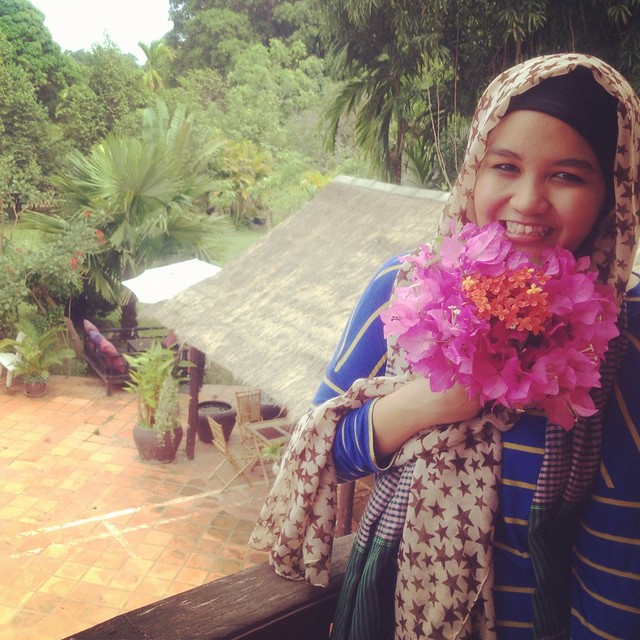 Things haven’t always been so rosy. Once thriving as the Eastern escapade of European and American travellers alike, this land was ravaged in the hands of the Khmer Rouge during their rise in the 70s. Maybe I was influenced by the little that I’ve read about the unthinkable cruelty that took place. But being there you could still sense traces of the past, even after 40 years. The spirit of the people however, remains undeterred. Our tuk-tuk driver Si Ta was never short of a smile from the minute we saw him holding a sign bearing my name at the airport. Rathy and Kagna have been extremely helpful with the endless whereabout and howabout questions that we had. As a part of the newer generation, they’re doing a tremendous job at reviving their hometown back to its glory days. 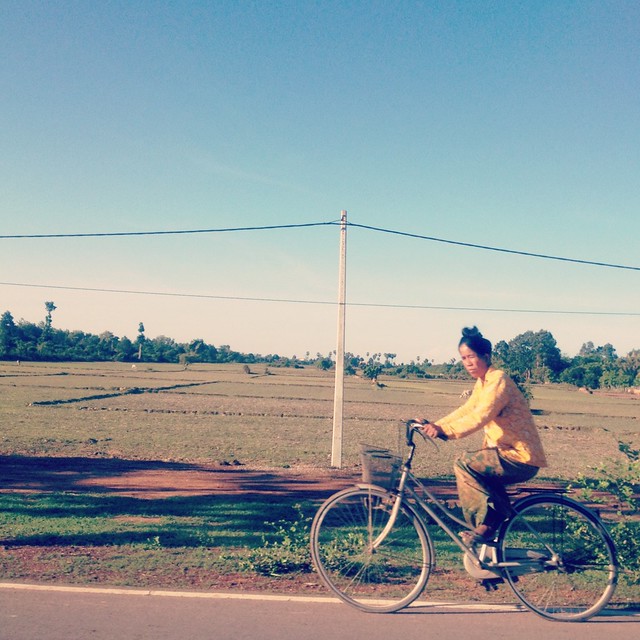
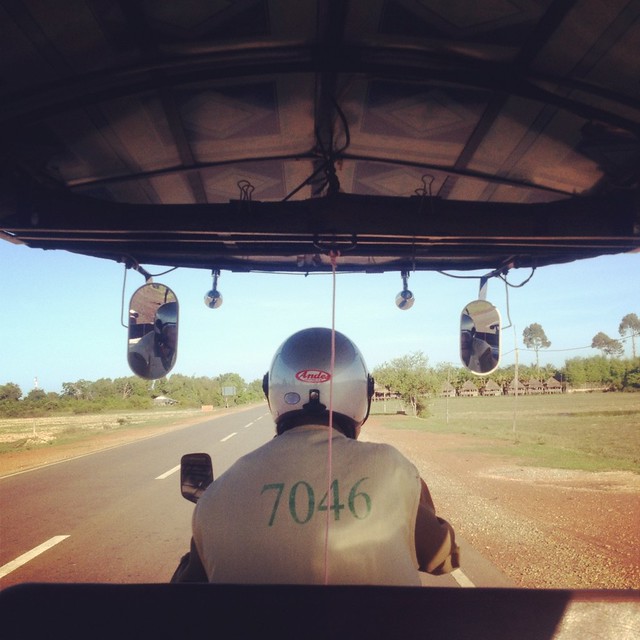 Siem Reap has always been on our radar for the past year. So when AirAsia was blowing seats for peanuts (not literally) during one of its promotions, we snagged ours for a little less than RM200 all-in each, return. Which could have been lower had it not been for the USD25 departure tax. That’s right, tax for leaving the country. Something our government should consider in these hard times. The layout of Siem Reap is pretty simple. There’s the town. And then there’s the temples. Connecting the two is a fairly straightforward road system that puts ours to shame, hands down. The motorists there appear to be much, much calmer than the angst-ridden daredevils maneuvering our highways. Fair enough, perhaps there are much less cars there but temper is a human trait and we’ve got a lot to learn from them about controlling ours. Something I couldn’t be any less guilty of, being a true Malaysian. 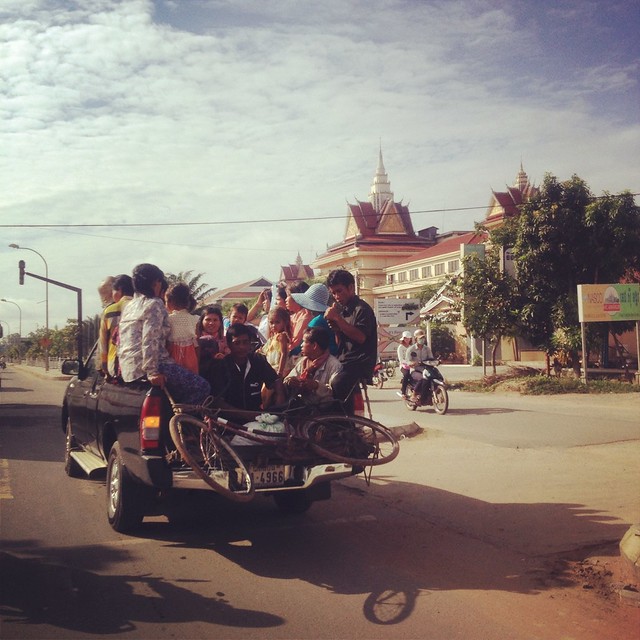
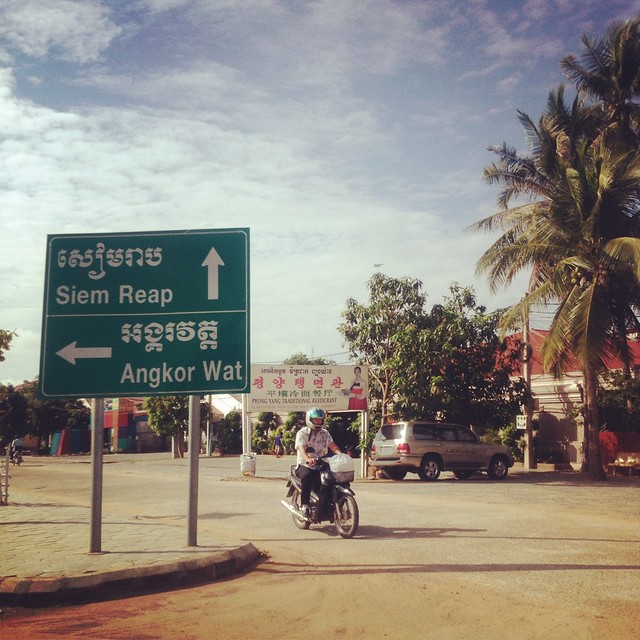 If there’s one thing we’ve learned from the few places we’ve been to, it would be to always, always avoid the crowd -- at all cost. It’s always worth the trouble and you could really use the head-start. Even if it means dragging yourself to the airport half-awake in the wee hours to catch a red-eye flight. Which was what we did. Right after the little birthday party, while the sun was still crawling up, we headed straight to Angkor, the pride of the kingdom. The idea was to avoid the unforgiving traffic of buses going into the park. Not to mention the throngs of tour groups wearing the same t-shirt, making as much noise as a Spartan army. More often than not, three of them would end up in the background of your photo showing the peace sign or jumping for an on-air shot. Oh the joy of traveling. Ironically, on-air shots aside, we were tourists ourselves. All these talks of not doing touristy things could only leave us in a bewildered heap. There was no avoiding it. So there we were getting our photos taken to get our passes into the Angkor Archaeological Park. Entrance is USD20 for one day and USD40 for two days with an additional day free. I guess they know most people can’t handle more than two days of temple visiting anyway. 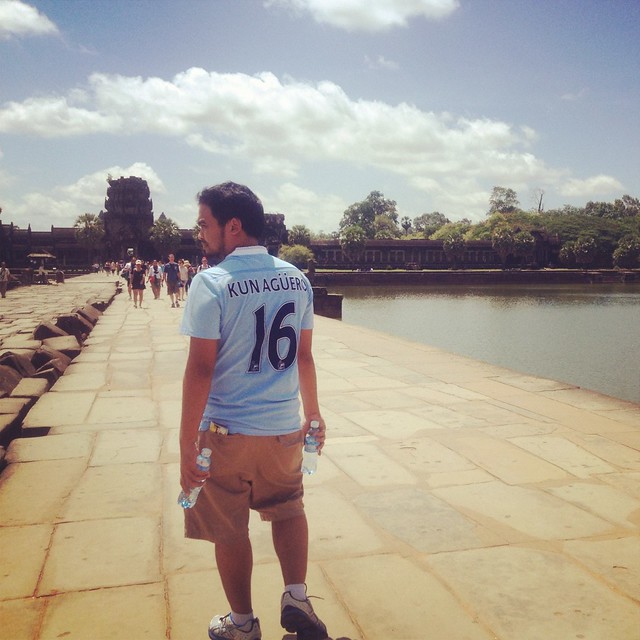
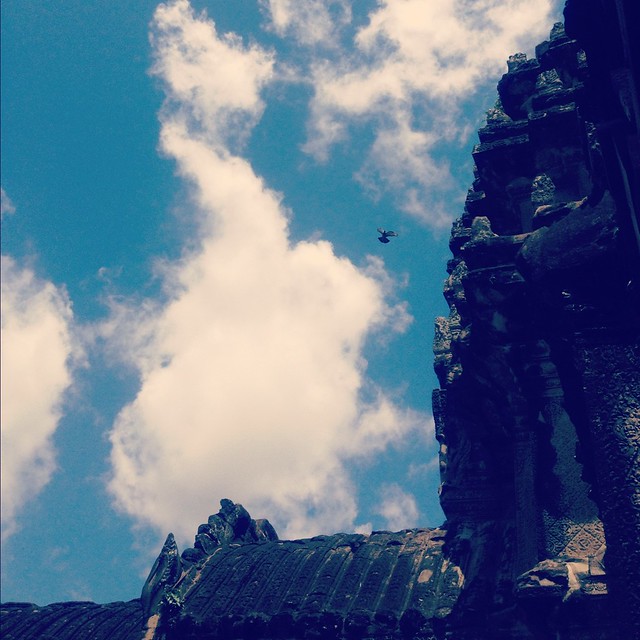 The first thing that really caught me about Angkor was the sheer vastness of the area. It is, after all, the largest pre-industrial city in the world. (Lubbock, Texas coming in a close second.) Stretching at about 400 square kilometres -- about eight times the size of Putrajaya -- Angkor served as the administrative capital of the Khmer Empire for about 500 years up until the 15th Century. That in itself was already about 600 years ago. Madonna was probably just a little girl at the time. There’s simply no telling how any of this was built without any of the technology that we have today e.g. Twitter. Angkor had the most architecturally complex buildings at the time. And from the detailed carvings seen on the walls of the structures, you could imagine the massive amount of manpower involved in building Angkor and the bragging rights the king had at the time. Again, to not be able to tweet about it must’ve been excruciating. 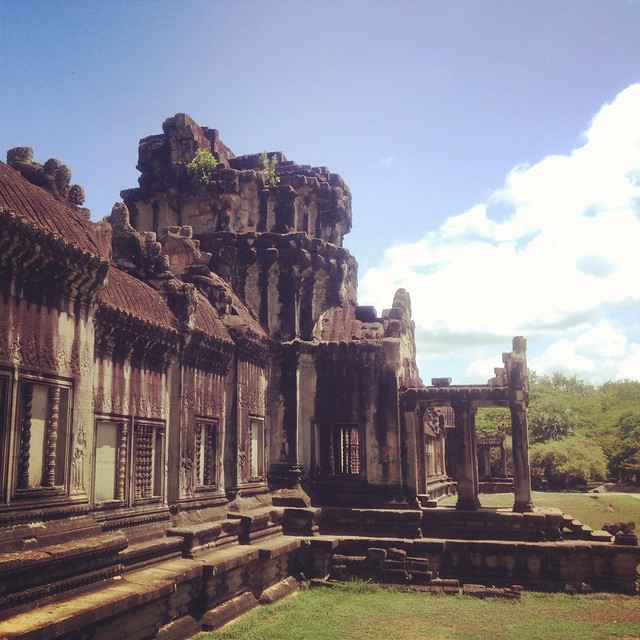
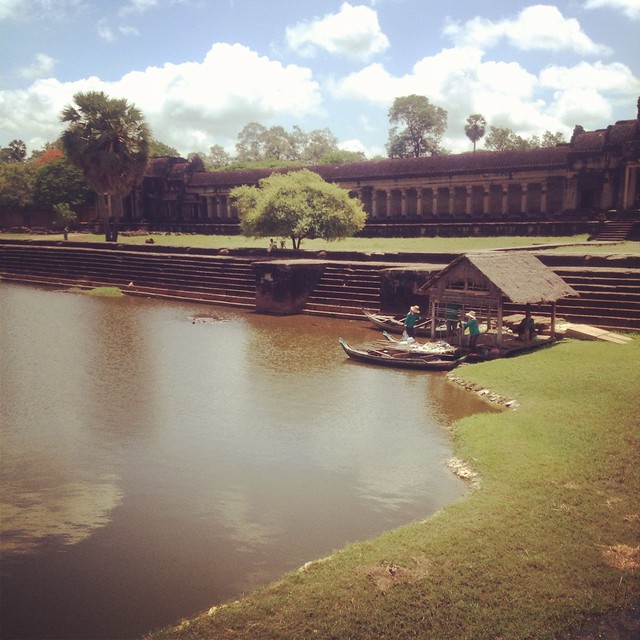 Nestled amidst forests and farmlands to the north of the great Tonlé Sap lake, the heart of this UNESCO World Heritage Site is Angkor Wat, one of the largest religious monuments in the world. Adjacent to it is Angkor Thom, which houses Bayon; widely known for the giant faces decked on its stone towers. The whole territory is a civilization on its own and I believe, at par with the likes of Machu Picchu, Petra, and New Jersey. There are two routes in exploring the area. And thanks to the thoughtful park authority, the courses are conveniently named Little Circuit and Big Circuit. The names say it all so unless you’re as passionate about archaeology as that Ross guy from Friends, it’s best to go for the Little Circuit. It’s where Ta Prohm is anyway. That’s where they shot Tomb Raider. Apart from escaping the hordes of people raiding the area, another reason to visit Angkor during the low season (April – September) is to avoid the ridiculously long queue at Ta Prohm for a photo in front of the “Tomb Raider Tree”. If you remember that scene where Angelina Jolie crawled and hurdled her way through the ruins (who doesn’t), you might recall an empty doorway with large tree roots forming around it. That’s the place. We scurried our way for a quick snap and escaped from the crowd and disappeared faster than Lara Croft ever could. 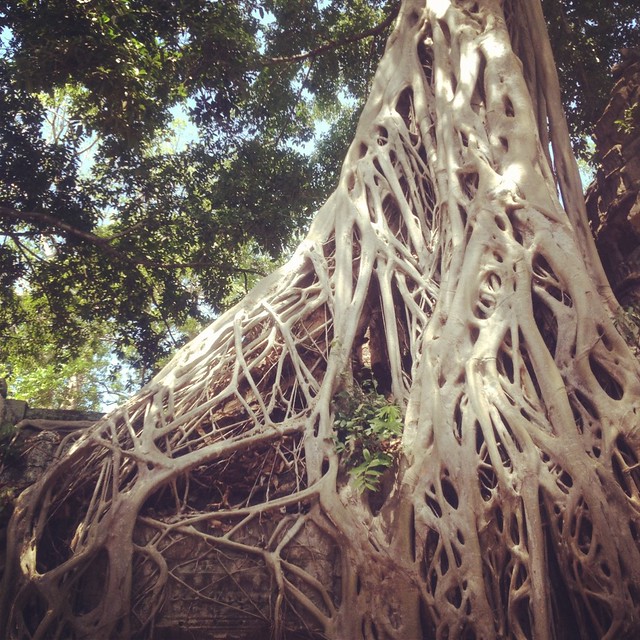
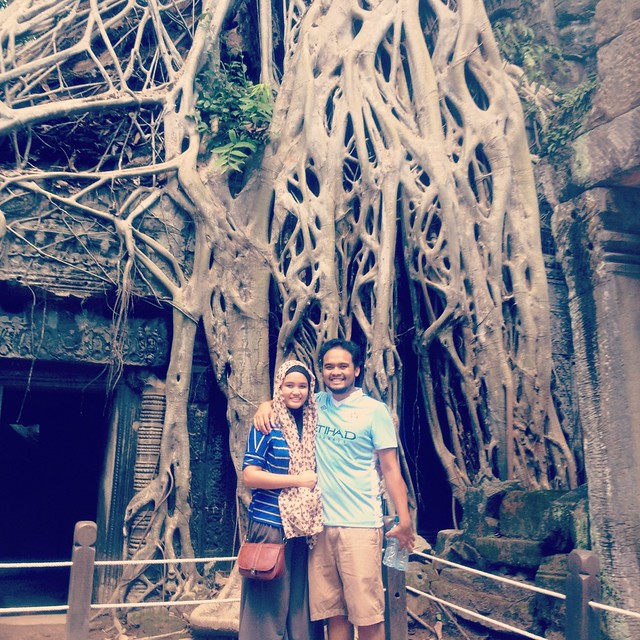 A day out at Angkor is just nice if you’re the average traveller like us. If you’re a history buff though, the 7-day pass is a bargain at USD60. The Indiana Jones in me was up for it but judging by Azalia’s inability to walk toward the end of our route, we retired back to Bloom Garden and called it a day. 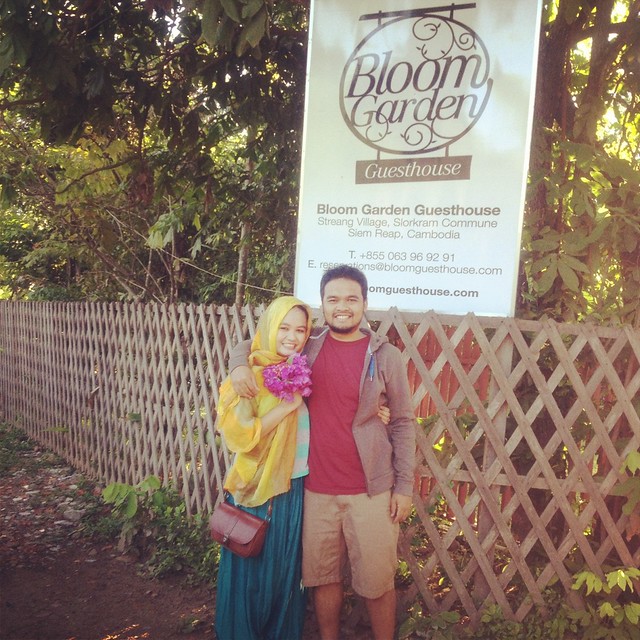
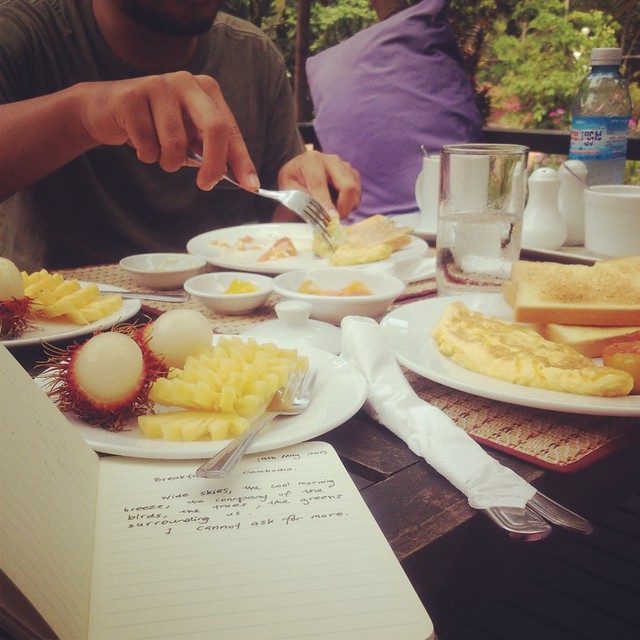 Just 6km south of Angkor is Siem Reap town. It’s not hard to fall in love with this quaint little city. The overall vibe of the place is laidback and people seem to take their time in doing everything. Even at night when the lights and music along their infamous Pub Street are on full blast, one could still enjoy an uninterrupted stroll. The great thing about Siem Reap is the lack of tall buildings. The rule is that no buildings are allowed to be more than three stories or taller than the Angkor Wat. So while preserving its Khmer heritage, the law also controls development which would in turn benefit the sustainability of its landmarks. No I don’t think the same thing will ever happen in KL. 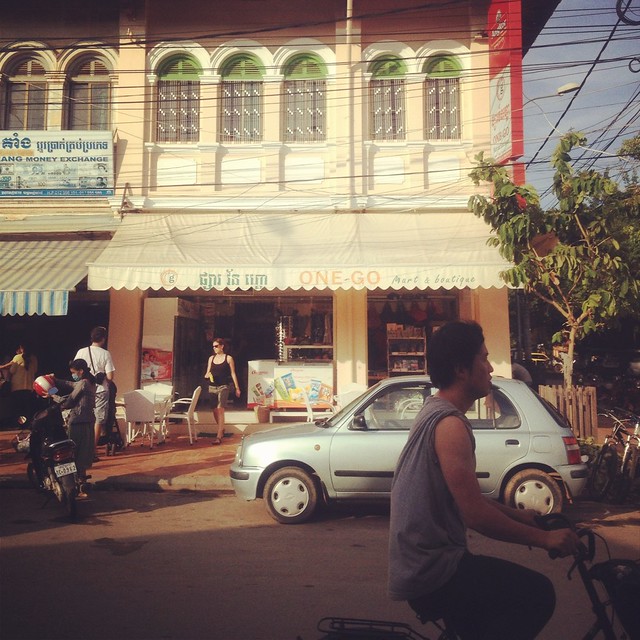
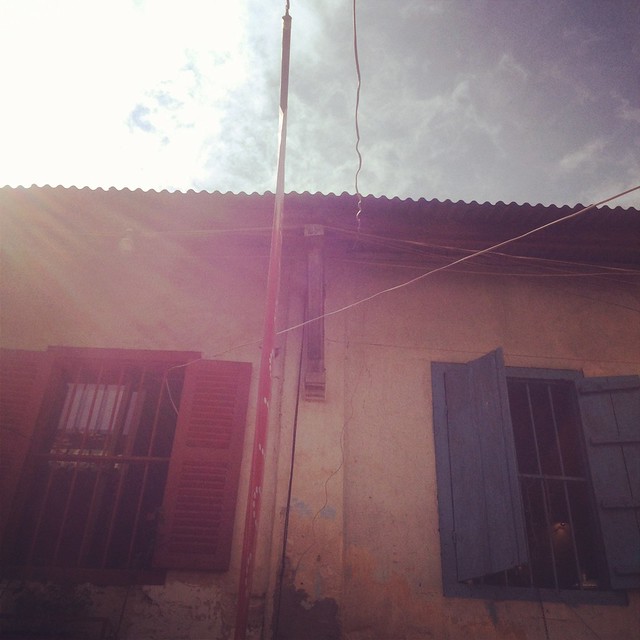 The identity of Siem Reap lies within the blend of local colors at the Old Market and colonial architecture surrounding the French quarters. The symbiotic relationship between them creates an array of little shops that are simply full of character, life, and personality. Art lovers may enjoy the row of cafes on The Alley West where the soul of local independent literary, music and fashion scene blooms. But if you’re not into any of that, enjoying a cold glass of fresh mango juice outside one of these eateries in the unrelenting heat is an unforgettable experience. At least for me it made waiting for Azalia to be done with the place much more bearable. With shop names like Art Deli, Poetry and Singing Tree, there’s more than one reason for her to spend forever there. 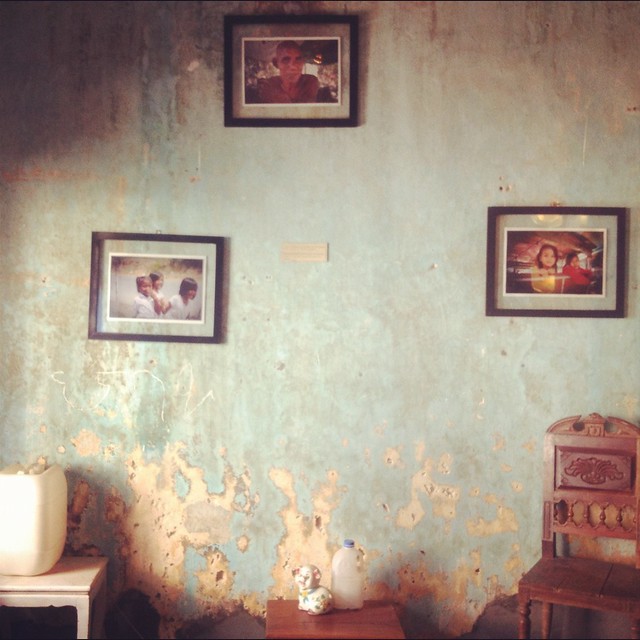
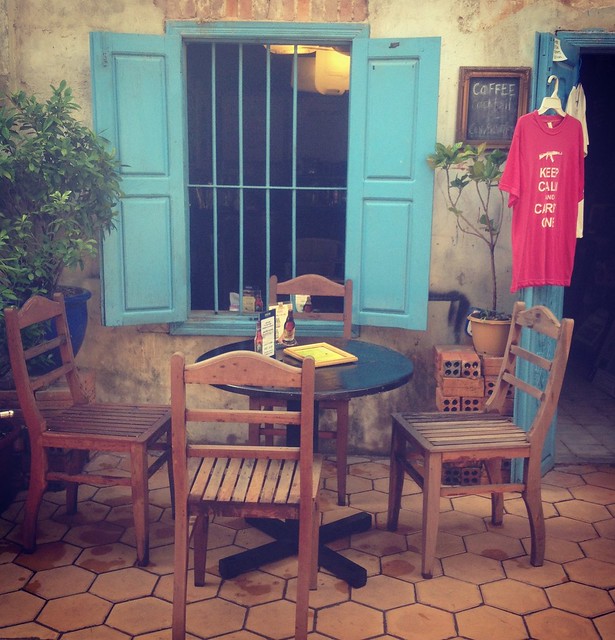 As I’ve mentioned, the charm of Siem Reap is in the warmth and hospitality of its people. I’m in no position to say such treatment is only exclusive to foreigners. As most of them thought I was a local and initiated conversation in Khmer anyway. Our experience communicating with the locals was nothing short of a pleasure and it’s great to have that “everybody knows your name” ambiance going. I guess in a way it does help that I look like a Khmer man. Hey did I mention most of the guys there look like Antonio Banderas? Apart from the regular mode of business around the market area, Siem Reap is home to a host of organizations and foundations formed to help the locals. Shops selling products of these community groups can be found around the town and they operate as fair-trade movements; all in the spirit in making a difference in the lives of the people. The place where we stayed for example, runs Bloom Bags which gets locals involved in the crafting and marketing of bags made from recycled rice and fish feed bags. Proceeds mostly go directly to the men and women who made them. Walking along the streets of Siem Reap, or Cambodia for that matter, you can’t help from feeling concerned about the future of its children. Kids from as young as 5 or 6 roam the paths and alleyways of the blossoming city, through the maze that is life, knowing very little of what lies ahead. It was a challenge for us having to decide whenever a child comes with a souvenir for sale, or seeking donation. A part of you does want to lend a hand but the reality of not knowing where the little help would end would often leave you rather helpless. The government and NGOs are doing all they can to curb orphanage scams and thanks to their effort, helping becomes more assured. 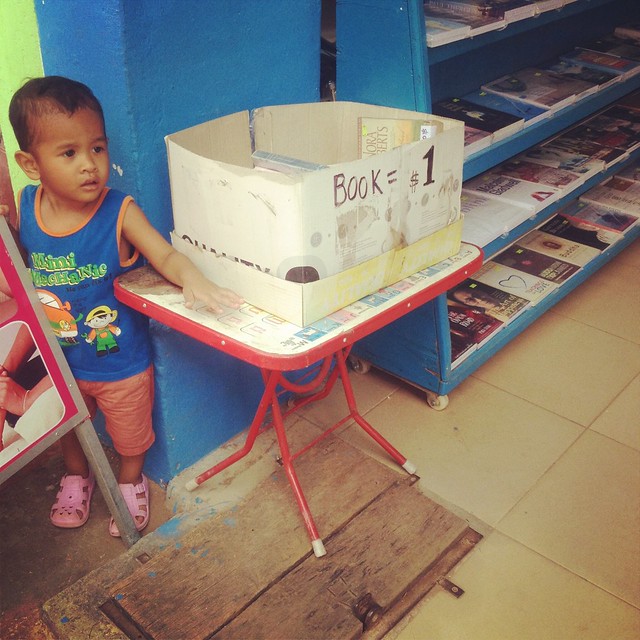
 We took the first flight out of Siem Reap on that Sunday morning just as the sun was just rising. After bidding Rathy and the gang farewell, Si Ta took us to the airport using a different route. One that takes you along the paddy fields and farms where children run around in circles to the amusement of their loving parents. The sound of their laughter, intertwined with the reverberating echoes of our tuk-tuk’s 150cc engine. Maybe Si Ta took that unconventional route on purpose so that our last recollection of our stay there was a mesmerizing one. We left Cambodia with a cherished reminiscence of that 20-minute ride etched in our memory. 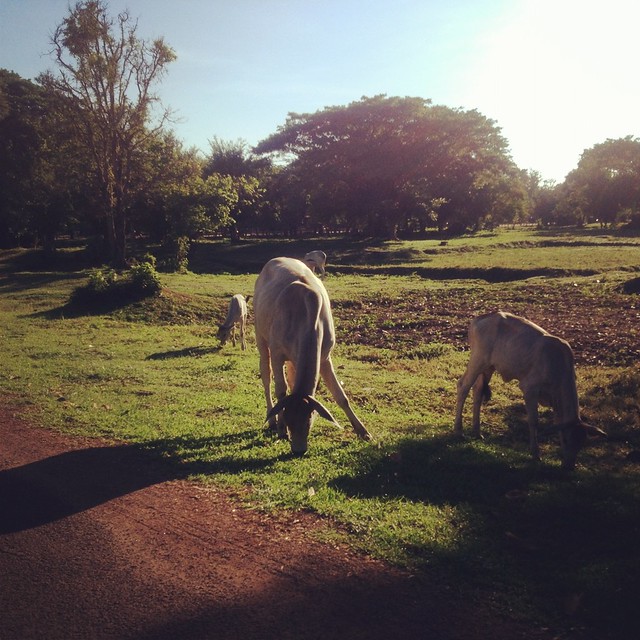
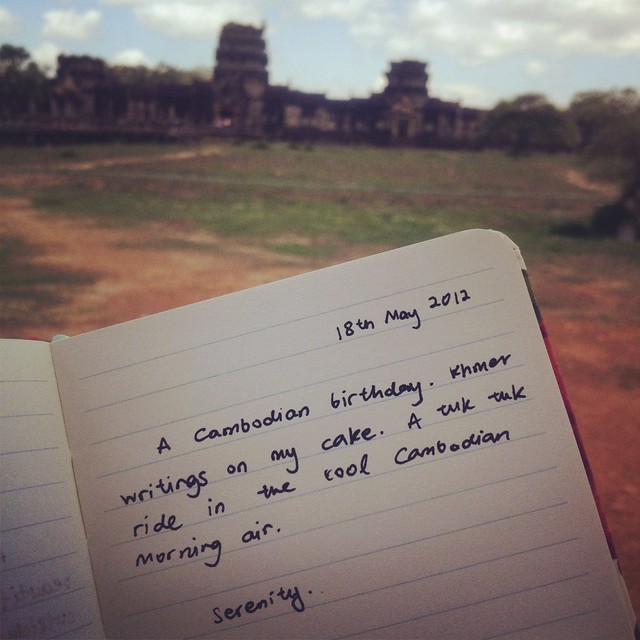
More photos by Azalia Suhaimi here.
Comments:
Azalia, I can't get over how talented you are. The photo of the wall with the chair and frames is my favourite. Did you take all these with an iphone?
Also, the Cambodian birthday is adorable.
You're too kind, Gen. :-) I truly enjoy your photos and traveling tales too. And oh yes, my photos were mostly from the iPhone - making full use of Instagram, haha!
Looking forward to your next entry, Gen. :-) Subscribe to Post Comments [Atom] |

About Busking Barefoot is the travel blog of Asrif Yusoff and Azalia Suhaimi. Here's what happened. Places Bon Ton Kota Kinabalu Krabi Maldives Siem Reap Similajau Simply Mel's Yogyakarta Tanjong Jara Western Australia Western Australia (Video) 
This work is licensed under a Creative Commons Attribution-Noncommercial-No Derivative Works 2.5 Malaysia License. |


Post a Comment